A frog themed poster for CVC words
Use this frog themed beginning, middle and ending sounds poster to help your students identify and combine individual letter sounds.
Updated: 05 Sep 2016
A frog themed poster for CVC words
Non-Editable: PDF
Pages: 1 Page
Years: F - 2
Recognise and generate rhyming words, alliteration patterns, syllables and sounds (phonemes) in spoken words (phonological awareness)
Orally manipulate phonemes in spoken words by addition, deletion and substitution of initial, medial and final phonemes to generate new words (phonological awareness)
Use short vowels, common long vowels, consonant blends and digraphs to write words, and blend these to read one- and two-syllable words
Understand that a letter can represent more than one sound and that a syllable must contain a vowel sound
Recognise and generate rhyming words, alliteration patterns, syllables and sounds (phonemes) in spoken words Elaborations recognising and producing rhyming words when listening to rhyming stories or rhymes, for example 'funny' and 'money' (Sk...
Manipulate phonemes in spoken words by addition, deletion and substitution of initial, medial and final phonemes to generate new words Elaborations recognising words that start with a given sound, or end with a given sound, or have a given ...
Use short vowels, common long vowels, consonant digraphs and consonant blends when writing, and blend these to read single syllable wordsElaborationsusing knowledge of letters and sounds to write words with short vowels, for example âmanâ, ...
Understand that a letter can represent more than one sound and that a syllable must contain a vowel soundElaborationsrecognising that letters can have more than one sound, for example the letter âuâ in âcutâ, âputâ, â...
Understand how to use knowledge of digraphs, long vowels, blends and silent letters to spell one and two syllable words including some compound wordsElaborationsusing knowledge of known words to spell unknown words, for example using the word â...
Recognises that there are different kinds of spoken texts with specific language features and shows an emerging awareness of some purposes for spoken language
Demonstrates emerging skills and knowledge of texts to read and view, and shows developing awareness of purpose, audience and subject matter
Thinks imaginatively and creatively about familiar topics, simple ideas and the basic features of texts when responding to and composing texts
Uses a variety of strategies, including knowledge of sight words and letterâ€"sound correspondences, to spell familiar words
Identify rhyming words, alliteration patterns, syllables and some sounds (phonemes) in spoken words
Recognise short vowels, common long vowels and consonant digraphs, and consonant blends
Understand that a letter can represent more than one sound, and that a syllable must contain a vowel sound
Manipulate phonemes by addition, deletion and substitution of initial, medial and final phonemes to generate new words
Understand how to use digraphs, long vowels, blends, silent letters and syllabification to spell simple words including compound words

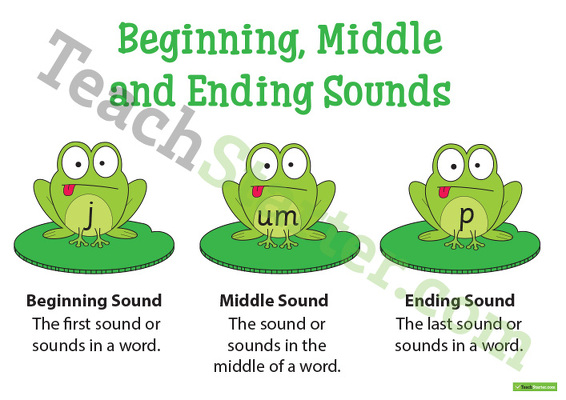
A frog themed poster for CVC words
Use this frog themed beginning, middle and ending sounds poster to help your students identify and combine individual letter sounds.
Recognise and generate rhyming words, alliteration patterns, syllables and sounds (phonemes) in spoken words (phonological awareness)
Orally manipulate phonemes in spoken words by addition, deletion and substitution of initial, medial and final phonemes to generate new words (phonological awareness)
Use short vowels, common long vowels, consonant blends and digraphs to write words, and blend these to read one- and two-syllable words
Understand that a letter can represent more than one sound and that a syllable must contain a vowel sound
Recognise and generate rhyming words, alliteration patterns, syllables and sounds (phonemes) in spoken words Elaborations recognising and producing rhyming words when listening to rhyming stories or rhymes, for example 'funny' and 'money' (Sk...
Manipulate phonemes in spoken words by addition, deletion and substitution of initial, medial and final phonemes to generate new words Elaborations recognising words that start with a given sound, or end with a given sound, or have a given ...
Use short vowels, common long vowels, consonant digraphs and consonant blends when writing, and blend these to read single syllable wordsElaborationsusing knowledge of letters and sounds to write words with short vowels, for example âmanâ, ...
Understand that a letter can represent more than one sound and that a syllable must contain a vowel soundElaborationsrecognising that letters can have more than one sound, for example the letter âuâ in âcutâ, âputâ, â...
Understand how to use knowledge of digraphs, long vowels, blends and silent letters to spell one and two syllable words including some compound wordsElaborationsusing knowledge of known words to spell unknown words, for example using the word â...
Recognises that there are different kinds of spoken texts with specific language features and shows an emerging awareness of some purposes for spoken language
Demonstrates emerging skills and knowledge of texts to read and view, and shows developing awareness of purpose, audience and subject matter
Thinks imaginatively and creatively about familiar topics, simple ideas and the basic features of texts when responding to and composing texts
Uses a variety of strategies, including knowledge of sight words and letterâ€"sound correspondences, to spell familiar words
Identify rhyming words, alliteration patterns, syllables and some sounds (phonemes) in spoken words
Recognise short vowels, common long vowels and consonant digraphs, and consonant blends
Understand that a letter can represent more than one sound, and that a syllable must contain a vowel sound
Manipulate phonemes by addition, deletion and substitution of initial, medial and final phonemes to generate new words
Understand how to use digraphs, long vowels, blends, silent letters and syllabification to spell simple words including compound words

We create premium quality, downloadable teaching resources for primary/elementary school teachers that make classrooms buzz!
Would you like something changed or customised on this resource? While our team makes every effort to complete change suggestions, we can't guarantee that every change will be completed.
Did you spot an error on this resource? Please let us know and we will fix it shortly.
Are you having trouble downloading or viewing this resource? Please try the following steps:
If you are still having difficulty, please visit the Teach Starter Help Desk or contact us .

A fun game for students to play in small groups to consolidate their understanding of adjectives.
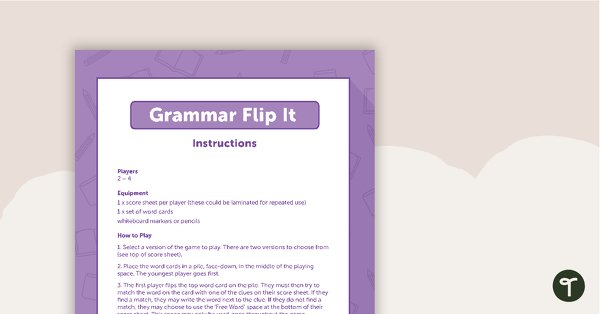
A fun game for students to play in small groups to consolidate their understanding of adverbs.

A set of 12 Queensland Cursive entry and exit shuttles to join together to make a handwriting spaceship.
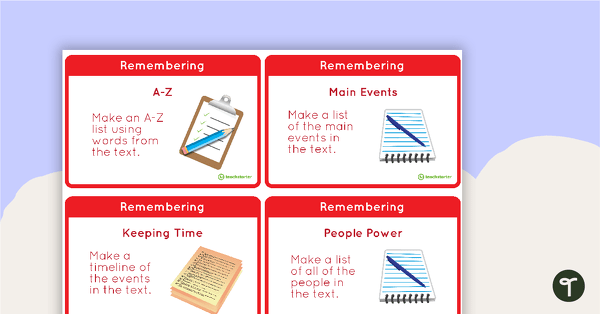
44 Bloom's Taxonomy fast finisher activity cards.
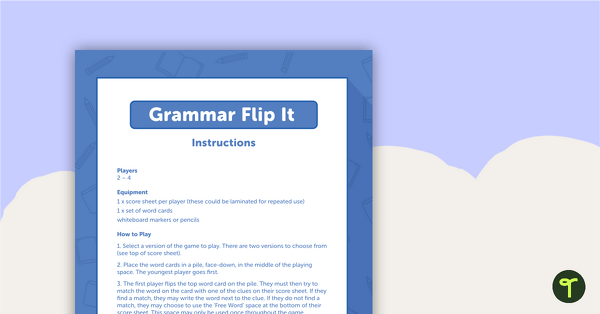
A fun game for students to play in small groups to consolidate their understanding of verbs.
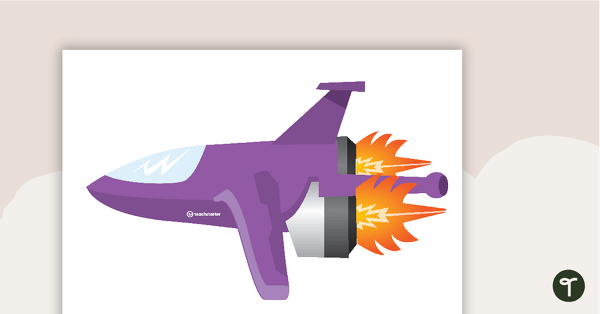
A set of 12 Queensland Cursive entry and exit shuttles to join together to make a handwriting spaceship.

A set of 12 Queensland Cursive entry and exit shuttles to join together to make a handwriting spaceship.
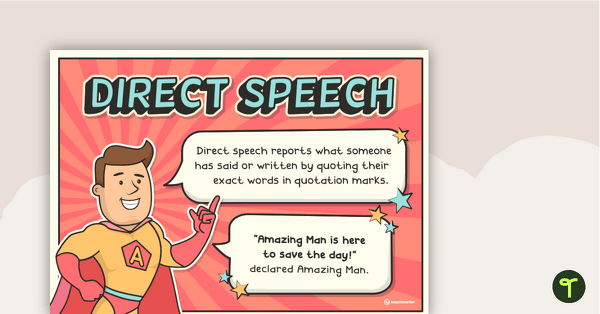
Amazing Man helps students to learn what both direct and indirect speech entails as well as providing examples on how they can use it themselves.
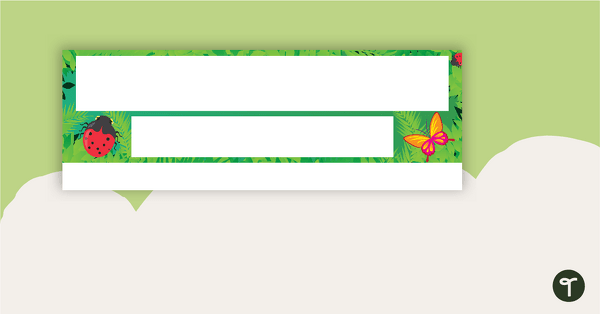
Lower Grade Desk Plates with the alphabet, number line and student's name on them.
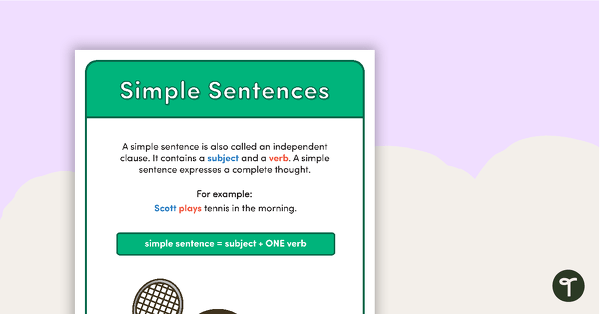
A set of 7 posters outlining the structure of various types of sentences.
0 Comments
Write a review to help other teachers and parents like yourself. If you'd like to request a change to this resource, or report an error, select the corresponding tab above.